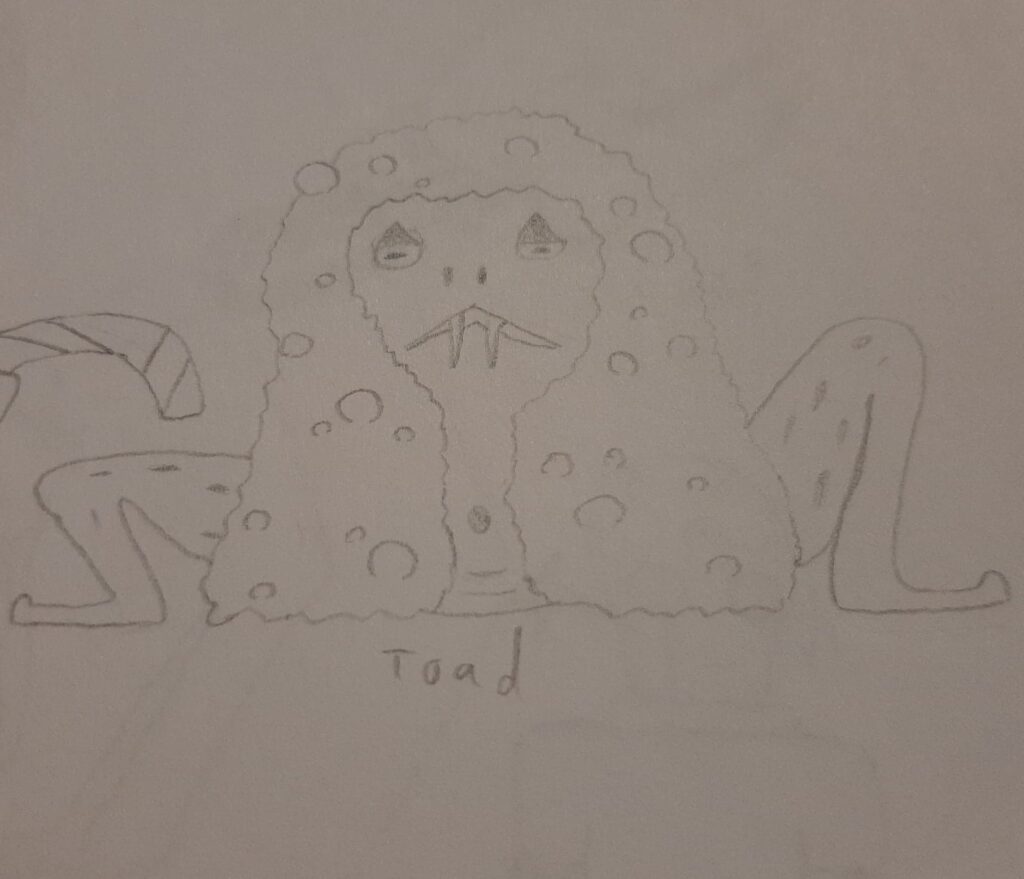
Bubbler Toad
If you are willing to get your feet wet (at the risk of losing your toes) and venture deep into the swampiest parts of the taiga, you may be rewarded with some of the most beautiful sights in the north. Sweeping landscapes of bubbles, miniature fortresses stuck to trees, an entire world of foam. You have walked into the world of the bubbler toad.
These toads stand out quite clearly from other amphibians. The largest males are nearly a foot tall, and all of them are bright blue or dark purple depending on species, with bright yellow eyes, and bubble-coated skin. Males also have two long fangs sticking from their top jaw. These are not used in combat or self-defense. That’s simply not necessary. The toads exude virulent toxins from their skin, which mix with water to make their bubbles. No, these fangs are for popping bubbles.
During the mating season, males and females alike make great rafts and fortresses of bubbles, picking their opposites with the most impressive homes. While females are simply trying to make enough for their predicted spawn of eggs, males compete more directly. When not working on their own fort or finding food (usually consisting of small fish, worms, and witch-insects) they will find other males and stab their bubbles with their fangs, destroying as many as they can before their vandalism victim notices and chases them away.
At the end of this game, females pick their mates, joining their rafts to a male’s fortress and laying eggs in small, cordoned-off sections of water defended by a wall of poisonous bubbles. The babies are born with a long tusk protruding from their mouth, which they use to pop the bubbles and swim free once born, entering the environment to make their way. Within a year, they are new toads, ready to join the cycle.

Ooh, I like these guys. Having such a strangely specific mating ritual gives them a certain charm.